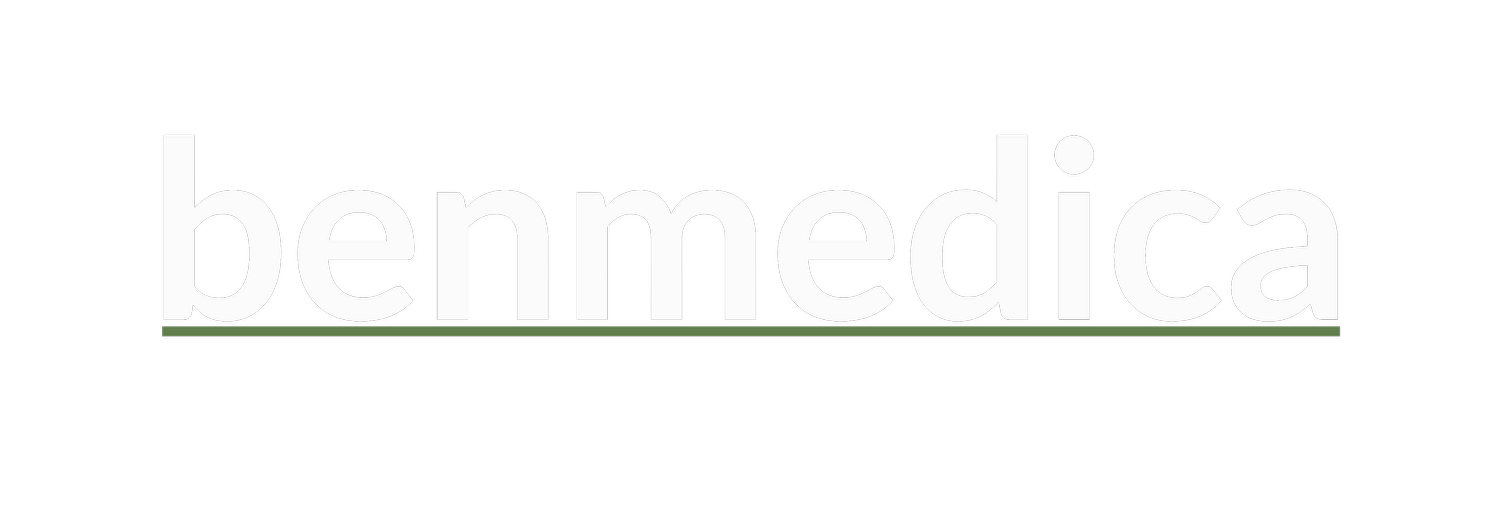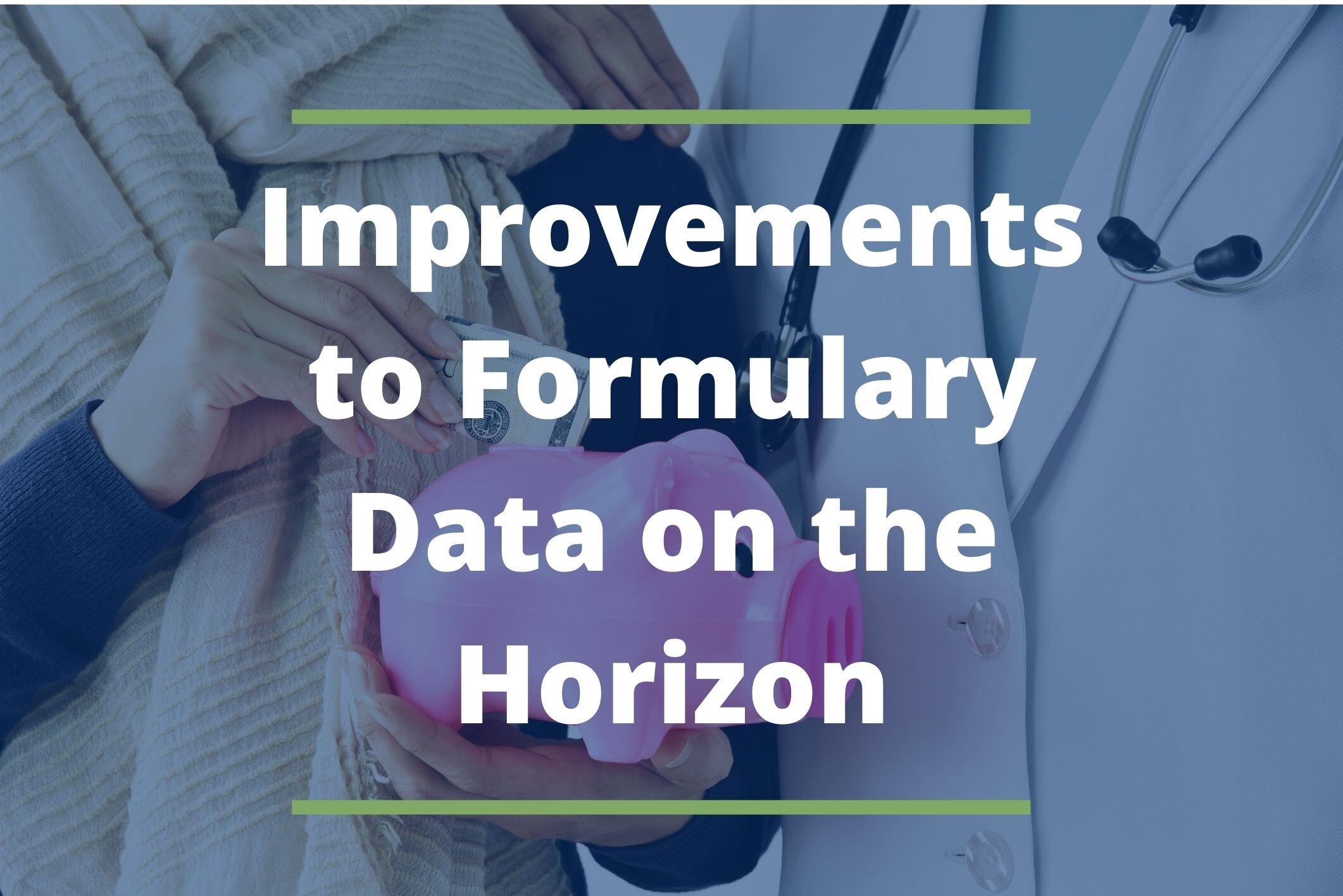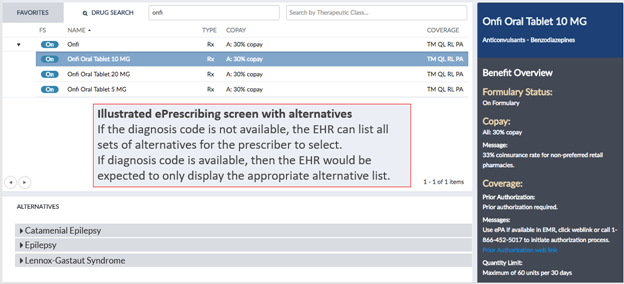Exciting changes are coming to NCPDP's Formulary and Benefit Standard (F&B), and we are reviewing the changes here. This update to the existing standard responds to market events like indication-based formulary designs, clearer formulary statuses and price transparency. The new standard incorporates feedback by payers and EHRs (electronic healthcare record vendors) from their use of the current standard named by CMS in 2012.
When we examine the changes in Formulary and Benefit version 53, we identify four stakeholders that will benefit from the enhanced format.
At NCPDP (National Council for Prescription Drug Programs, an ANSI-accredited , standards development organization providing healthcare solutions), the Maintenance & Control work group will vote to accept the proposal by the Formulary & Benefit / Real-time Prescription Benefit task group. The task group is recommending the following dates:
NCPDP requests CMS name a new version 53 in November 2020
Estimate final rule from CMS in October 2021
January 1, 2023 would start transition to v53
January 1, 2024 compliance mandated for new version
We have placed some of the changes into groups to assist in understanding the nature of the changes. Of course, we have much more detail available as we make plans to help our clients take advantage of these capabilities and assist them with the data support and information needed to leverage the opportunity this new format presents.
New Formulary Statuses
In this new version, the formulary status will move from numbers to text-based formulary statuses to have information be straightforward to physicians. Also, new formulary statuses will exist for when a brand is preferred, (truly) non-reimbursable, non-reimbursable without PA, and when a drug is part of "carve-out" coverage (processed by another party who is not the payer supplying the formulary). In the current standard, formulary status is a numeric field often displayed as a preferred level, with higher numbers being more preferred. This has been confusing to providers who can confuse patient copay tier where lower tiers are best with preferred levels where higher preferred levels are more desirable.
Finally, preferred drugs can now have a separate preference level, which will be consistent with the "lower numbers are better" like patient copay tiers. These changes resulted from the feedback on the current standard collected by the NCPDP Formulary and Benefit Task Group.
Indication-Based Drug Formulary Statuses
Providing formulary information for a drug based on the medication's use is a brand-new addition to the standard. It follows the inclusion of indication-based formulary drug status to Medicare Part D in 2020, mirroring similar commercial plan formularies developments. The indication for medication usually includes something related to the patient's diagnosis or intended use of the drug. Several drug classifications use indication-based formularies. The drug classifications include drugs that treat multiple conditions, but not all the same conditions for all of the drugs.
An example would be TNF alfa inhibitors, which consists of five medications. All five drugs are not approved for all uses of TNF alfa inhibitors. Formularies can now accommodate two medications in a class where Drug A is a preferred drug for psoriasis, and Drug B, in the same classification, is a preferred drug for rheumatoid arthritis.
The current data sorting of which drug is on formulary within a group of drugs for the specific diagnosis usually resulted in prior authorization requirements. Now prescribers will be able to get a view of these more intricate formulary inclusions and exclusions when selecting a medication in their Electronic Health Record system.
Using an indication can also be used for formulary alternatives. For example, Drug C is not preferred, Drug A is a preferred drug for psoriasis and Drug B is a preferred drug for rheumatoid arthritis, the alternatives for each drug use can be displayed separately to make alternatives clearer to providers.
Coverage File Improvements: Drug Alternatives, Step Therapy, Copay, and Prior Authorization Detail
Providing improved coverage information to help prescribers make better choices is a dramatic improvement in the new version.
Drug Alternatives:
Improving drug alternatives with drug use specific alternatives like the indication-based formulary statuses above is another improvement in the new format.
Step Therapy:
There are also improvements in step therapy with new options to communicate more complex step therapy details to prescribers. For example, step therapy will now communicate trials in multiple groups of drugs if required.
Copay:
Improved patient copay information handling creates straightforward capabilities for payers to include patient drug cost information early in the prescribing process.
Prior Authorization:
More information on prior authorization, such as routing, is also an option in formulary data to identify where PA requests should go.
Specialty Drug Coverage Information Now Included
Some drugs are covered under the pharmacy benefit in one plan and covered under the medical benefit in another plan. New information to resolve this issue is in version 53. A method to advise providers can equip providers with plan-specific information in the formulary if a drug is covered in the pharmacy benefit or medical benefit. This improvement can direct providers where to go for more details for cumbersome products that vary where coverage information occurs.
Supporting Drug Costs for Risk Sharing
In situations where the provider group is at risk for the total cost of care, including drug spending, formulary data can now include approximate plan drug costs. Using this capability gives providers awareness of drug costs during the prescribing process in their EHR workflow. Risk-sharing agreements have not often included drug costs because there has been no method to communicate costs to providers. This cost transparency will facilitate providers to go at risk with drug cost as part of treatment decisions.
Network Pharmacy Information
Today providers have no information on what pharmacies are in the network for the patient they are seeing. At times the coverage and patient cost can vary significantly between in-network and out of network pharmacies. The new version of formulary data can include the pharmacy benefit manager's network pharmacy information. Providing network pharmacy information to providers is an essential step in helping the provider get the lowest possible out-of-pocket cost for patients.
File Structures, Normalization and File Size Optimization
There are numerous changes to the file structures to optimize file size, change the structure of headers, and remove unused fields. One enhancement that may help prescribers who don't update formulary files is an expiration date. The EHR can determine if the formulary is outdated and display an appropriate message or even withhold formulary information until the data is updated.
Implementing Future Changes
Our team is extensively involved in developing this new version using input and experience in working with our clients. In leading the NCPDP task group, Benmedica has helped drive consensus across the breadth of NDPCP membership. Implementing version 53 requires the creation of new data. It will take effort and time to make the necessary impactful changes at each payer or PBM. Using a knowledgeable team to implement changes, like the team at Benmedica, can provide the required experience and expertise to drive more savings for patients, providers, and payers while shortening the implementation timeline.
We can help payers to plan and implement these changes. We have supplemental data for formulary information like our Smart Alts™ drug alternatives to integrate as required. As part of the process, there may be methods to introduce additional information in 2021 formularies before version 53 becomes commonplace to create a plan and patient savings through better formulary communications. For more information on Benmedica and how we might help your organization transition, contact us here.





